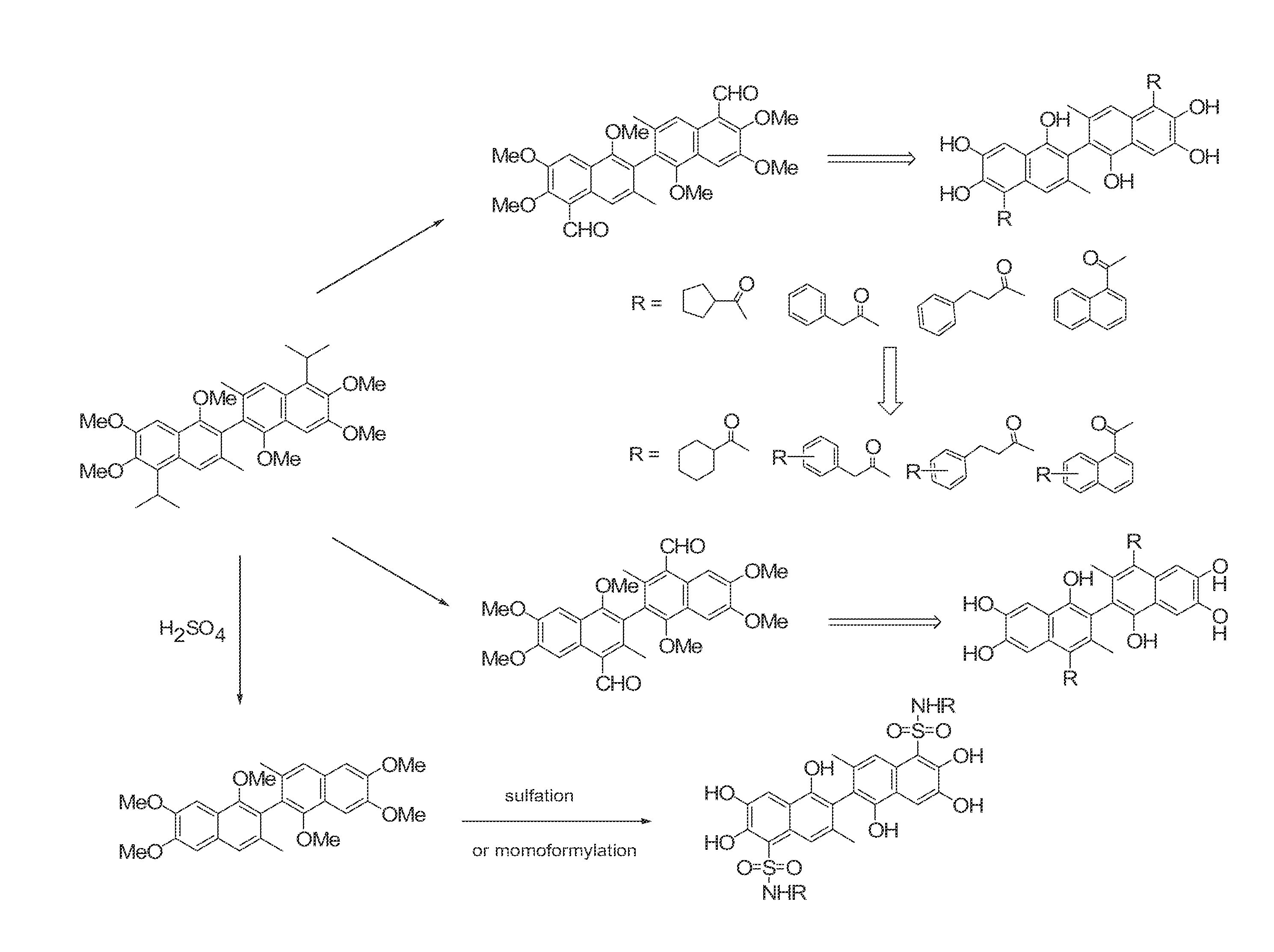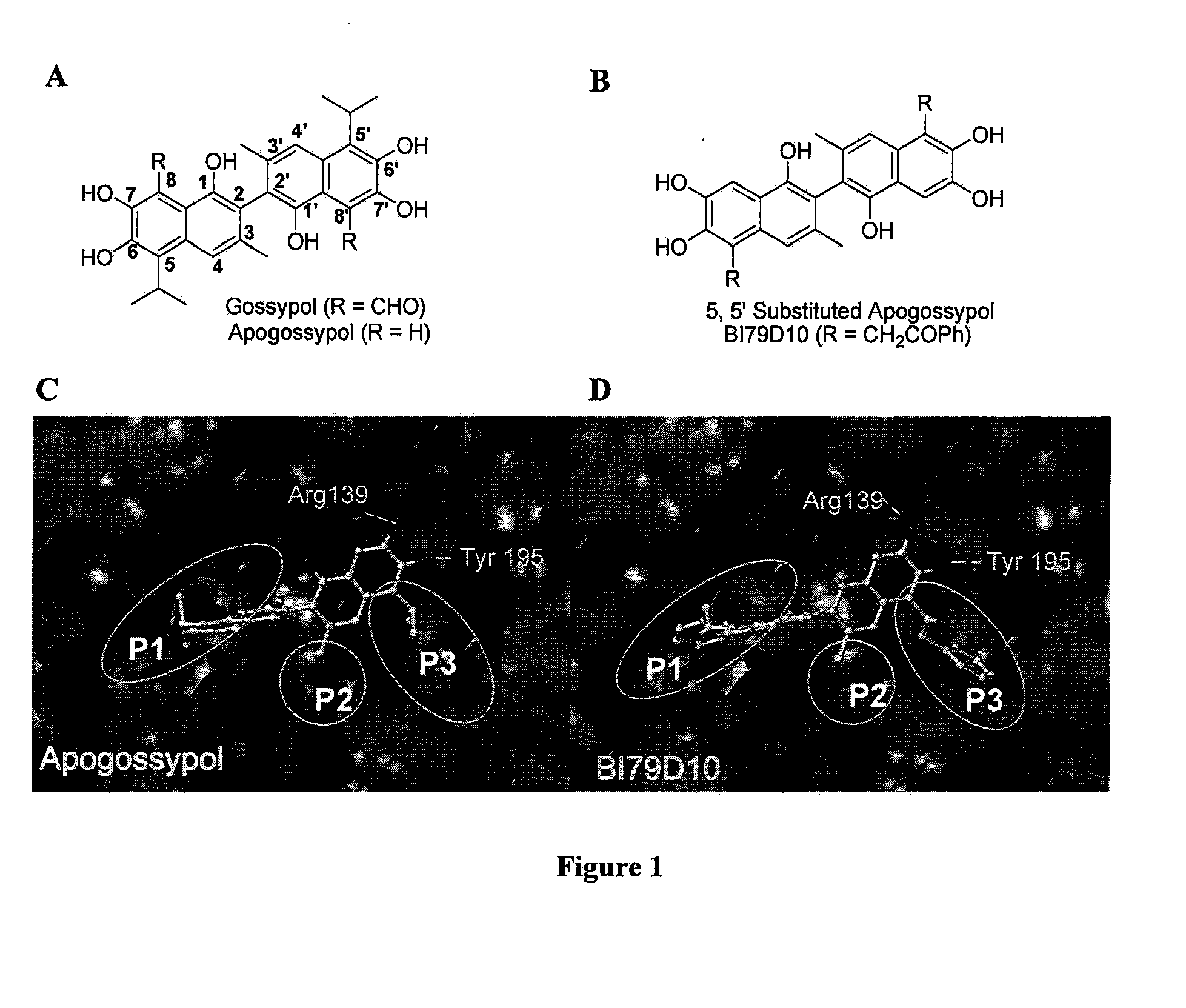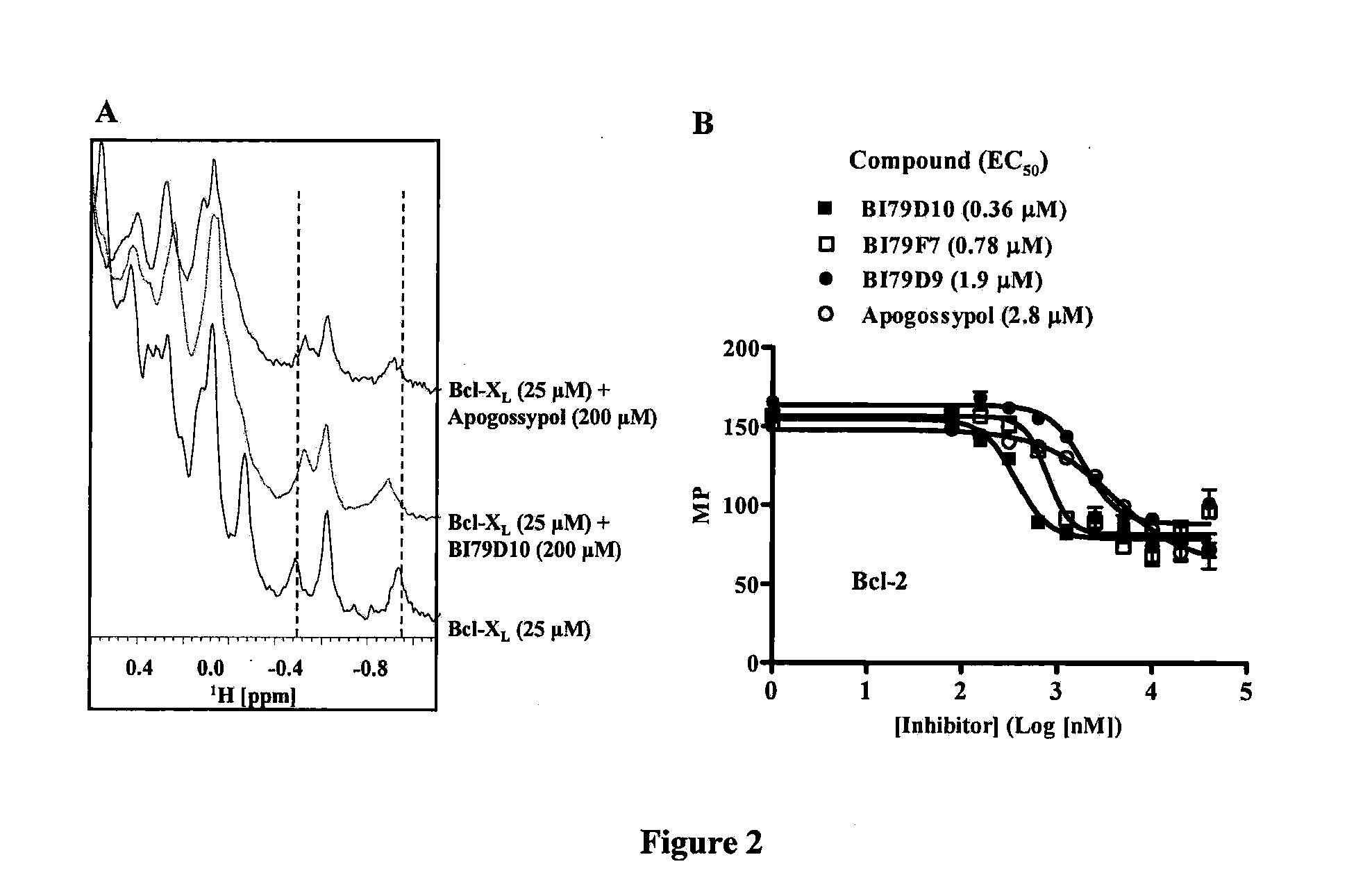Naphthalene-based inhibitors of Anti-apoptotic proteins
a technology of naphthalene and anti-apoptotic proteins, which is applied in the field of naphthalene, can solve the problems of uncontrollable cell growth, cell death, and pathology, and achieve the effect of modulating the activity of caspas
- Summary
- Abstract
- Description
- Claims
- Application Information
AI Technical Summary
Benefits of technology
Problems solved by technology
Method used
Image
Examples
example 1
Molecular Modeling
[0250]Molecular modeling studies were conducted on a Linux workstation and a 64 3.2-GHz CPUs Linux cluster. Docking studies were performed using the crystal structure of BCL-XL in complex with Bak-derived peptide (Protein Data Bank code 1BXL). The docked structures of 5, 5′ substituted Apogossypol derivatives in the peptide-binding pocket were obtained by ChemScore as the scoring function in the GOLD docking program. The protein surface was prepared with the program MOLCAD as implemented in Sybyl (Tripos, St. Louis). Docking studies were also performed using the crystal structure of Bcl-2 in complex with a benzothiazole BH3 mimetic ligand (Protein Data Bank code 1YSW). The ligand was extracted from the protein structure and was used to define the binding site for small molecules. Apogossypol and its derivatives were docked into the Bcl-2 protein by the GOLD docking program using ChemScore as the scoring function. The active site radius was set at 10 Å and 10 GA sol...
example 2
General Chemical Procedures
[0251]Unless otherwise noted, all reagents and anhydrous solvents (CH2Cl2, THF, diethyl ether, etc) were obtained from commercial sources and used without purification. All reactions were performed in oven-dried glassware. All reactions involving air or moisture sensitive reagents were performed under a nitrogen atmosphere. Silica gel or reverse phase chromatography was performed using prepacked silica gel or C-18 cartridges (RediSep), respectively. All final compounds were purified to >95% purity, as determined by a HPLC Breeze from Waters Co. using an Atlantis T3 3 μM 4.6 mm×150 mm reverse phase column. Compounds for in vivo studies were purified again using preparative HPLC again to >99% purity. The eluant was a linear gradient with a flow rate of 1 ml / min from 50% A and 50% B to 5% A and 95% B in 15 min followed by 5 min at 100% B (Solvent A: H2O with 0.1% TFA; Solvent B: ACN with 0.1% TFA). Compounds were detected at λ=254 nm. NMR spectra were recorde...
example 3
Synthesis of Compounds of the Disclosure
[0252]The synthesis for 5,5′ substituted apogossypol derivatives is outlined below:
[0253]Briefly and generally, gossypol 1 was treated with NaOH solution followed by dimethyl sulfate to afford methyl apogossypol. Reaction of methyl apogossypol with TiCl4 and dichloromethyl methyl ether resulted in loss of isopropyl groups and simultaneous bisformylation to give aldehyde 2. The compound 2 was treated with different Grignard or lithium reagents to afford a secondary alcohol, which was oxidized to the phenone using pyridinium chlorochromate. Subsequent demethylation of the phenone afforded compound 3.
[0254]More specifically, the gossypol acetic acid 1 (5 g, 8.65 mmol) in 50 ml of 40% NaOH was heated under nitrogen at 90° C. for 3.5 hours in the dark. The reaction mixture was cooled and poured slowly onto ice (300 ml) and concentrated H2SO4 (35 ml) mixture to form white precipitation. The precipitation was filtered, washed with water and dried to ...
PUM
| Property | Measurement | Unit |
|---|---|---|
| shrinkage | aaaaa | aaaaa |
| shrinkage | aaaaa | aaaaa |
| shrinkage | aaaaa | aaaaa |
Abstract
Description
Claims
Application Information
 Login to View More
Login to View More - R&D
- Intellectual Property
- Life Sciences
- Materials
- Tech Scout
- Unparalleled Data Quality
- Higher Quality Content
- 60% Fewer Hallucinations
Browse by: Latest US Patents, China's latest patents, Technical Efficacy Thesaurus, Application Domain, Technology Topic, Popular Technical Reports.
© 2025 PatSnap. All rights reserved.Legal|Privacy policy|Modern Slavery Act Transparency Statement|Sitemap|About US| Contact US: help@patsnap.com



